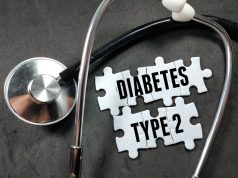Higher documentation of lifestyle counseling tied to lower time to HbA1c targets
THURSDAY, June 25, 2015 (HealthDay News) — A higher quantity of electronically documented notes on lifestyle counseling of patients with diabetes is tied to improved glycemic control, according to a study published online June 12 in Diabetes Care.
Naoshi Hosomura, from Brigham and Women’s Hospital in Boston, and colleagues assessed the association between quantitative measures of documentation of lifestyle counseling and improvements in glycemic control in 10,870 adults with diabetes who were followed in primary care practices (2000 to 2010). Heterogeneity was evaluated in distance between lifestyle counseling sentences between consecutive notes. The mean number of characters per note was used to characterize documentation intensity.
The researchers found that the median time to HbA1c <7.0 percent was 26 versus 39 months and 24 versus 39 months, respectively (P < 0.001 for all), when comparing patients in the highest versus lowest tertile by documentation heterogeneity and documentation intensity. The hazard ratio was 1.08 (P < 0.001) for time to HbA1c target for an increase of documentation heterogeneity by 0.15 units, and 1.27 (P < 0.001) for an increase of documentation intensity by 45 characters/note.
“In conclusion, this large, long-term retrospective study identified novel quantitative characteristics of electronic documentation of lifestyle counseling that are associated with improved glycemic control in patients with diabetes,” the authors write. “Further studies involving direct observation of patient care are needed to establish the nature of the relationship between documentation characteristics and patient outcomes.”
Copyright © 2015 HealthDay. All rights reserved.








